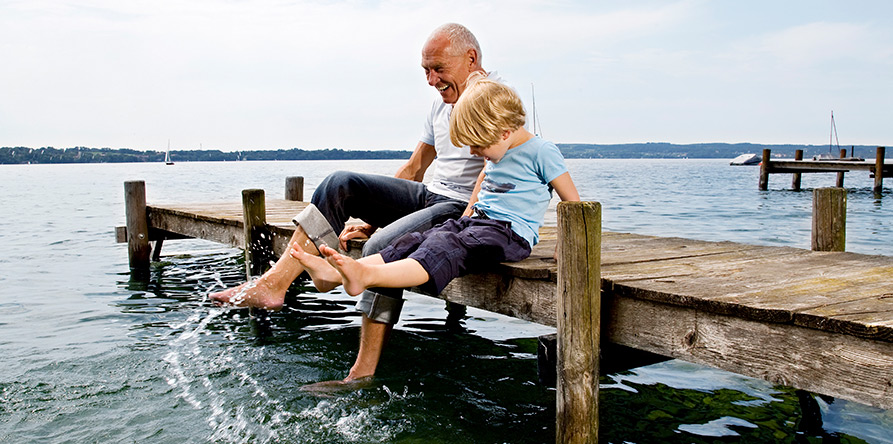
Five risks to your retirement income
You’ve spent years, if not decades, saving for your golden years, but that doesn’t mean your retirement will go according to plan. There are five key retirement risks that every Canadian must keep in mind. Here’s a summary of those risks and some suggestions on how to keep your plan on track.
Risk #1: Inflation
After almost four decades of relatively low and stable annual price increases for goods and services, Canada’s inflation rate has soared, topping 8.1% in June 2022.1 While rising prices affect everyone, they are especially concerning for retirees and those nearing retirement. That’s because inflation erodes purchasing power. Say you’ve saved $1 million for retirement – now that everything is more expensive, your savings may not go as far as you had hoped. If you’re currently employed, you may now be wondering if you’ve saved enough for retirement. If you’re already retired, you may be concerned about whether you have enough for your long-term needs.
Solution: To help combat inflationary effects on your savings, you’ll first want to make sure you have a well-diversified portfolio that’s invested in various asset classes. If you’re too heavily concentrated in just stocks or just bonds, and one of those asset types takes a hit, then you may find yourself underperforming inflation. Certain asset classes also do better in inflationary times than others; an advisor can help determine whether you need to adjust your asset mix. Also consider how much you’re receiving from other income sources, such as Canada Pension Plan (CPP) and Old Age Security (OAS), both of which are indexed to inflation, or a defined benefit pension plan, which may or may not be indexed to inflation. Finally, remember that if you retire at 65 you could very well end up living for another 20 or 30 years or more, which is plenty of time for any down markets to rebound.
Risk #2: Longevity
With people living longer than ever before, many retirees face the real possibility of outliving their savings. Not only would running out of money make it more difficult for you to live your life the way you had planned, but it could also jeopardize your children’s own retirement savings.
Solution: Here are three ways to help counter longevity risk. The first is to create a plan that considers a longer life. The average life expectancy in Canada is 82, with men living, on average, to 80 and women to 84.2 Many advisors, however, plan for a 100-year lifespan. The second is, once again, diversification. If you hold a variety of investments, one bad year in the equity market, for instance, won’t deplete your savings before you need them. The third is to continue holding equities in a portfolio so your money can continue to grow in retirement.
Risk #3: Asset allocation
Building wealth has as much, if not more, to do with asset allocation as with any particular investment. If you hold too much cash or too many bonds, then you could end up with too small a nest egg come retirement. This is especially true in inflationary environments, when rising costs can outpace investment growth. Asset allocation can also affect those already in retirement. If your portfolio is too conservative, then your dollars will have trouble growing during your many years of rest and relaxation.
Solution: Just because you’re retired doesn’t mean you need to be ultra-conservative. You still need your money to grow in retirement, considering that life doesn’t stop the day you’re done working. Ask yourself these three questions when you’re investing in retirement: What are your goals? What’s your timeframe? What’s your inherent risk tolerance? Spending goals could vary, but ultimately you’ll want to make sure your nest egg can last throughout your retirement, while your timeframe could be 20 or 30 years or even longer. As for risk tolerance, you don’t want to feel sick if markets fall, but a more balanced portfolio could keep your money relatively safe in a downturn, while still allowing your portfolio to grow.
Risk #4: Withdrawal rate
It’s one thing to plan for retirement, it’s another to live it. It’s easy to get excited about doing all the things you couldn’t do while working, but if you spend too much too early then you could run out of savings. On the flipside, if you play it too safe, then you won’t be living your retired life to its full potential. The withdrawal rate is the rate at which you remove money from your total savings. If you have $1 million in savings and you take out $40,000 a year, then your withdrawal rate is 4%. You’ll need to find a rate that lets you accomplish your goals, but doesn’t cause your savings to disappear too quickly.
Solution: Ideally, you want to withdraw as much as you need at any given time. If you plan to take two big trips in year one of retirement, take out what’s required to pay for those vacations, but not more. Naturally, withdrawing comes down to careful financial planning. You’ll want to work with an advisor to determine what the optimal withdrawal rate may be, and how market conditions, inflation, lifestyle choices and other factors might influence how much you need to withdraw. Also take into account your retirement goals, daily expenses and taxes, and consider how much you’re earning from CPP, OAS and other income sources, as these dollars may be able to offset the amount you’ll need to withdraw every month.
Risk #5: Health care
One of the biggest risks to a retirement plan is health care costs. With people living longer, the need for medical attention is increasing. A growing trend for older Canadians is to age in place, which means they want to grow older at home rather than move into a care facility, and this would likely come with additional costs too, such as renovations to accommodate accessibility or hiring in-home care.
Solution: While health conversations are often uncomfortable, these discussions are easier to have sooner, rather than during a crisis. Naturally, taking health care into account early, during your working years when you’re still saving for the future, is ideal. If you start planning now you can also adjust your retirement goals to account for health care. Maybe you have a condo in Florida; at what point could you sell it to help fund your long-term care needs? Can you take one less big trip a year so that you have a little more for your later years? An advisor can help you work through these tough issues.
Plan early and work with an advisor.
The best way to avoid all these risks is to plan early and revisit that plan often. You’ll want to calculate your potential income and any anticipated expenses, see where you net out and then adjust so that you have enough to cover your wants and needs. Also, consider consulting a financial advisor, if you don’t have one already. An advisor can help create a retirement plan, make sure you’re in the right investments and assist with ongoing plan and portfolio maintenance. Ultimately, planning is about more than projections. If you take the time to really understand your future needs, you can take comfort in knowing your retirement has been built to withstand whatever might come its way.

